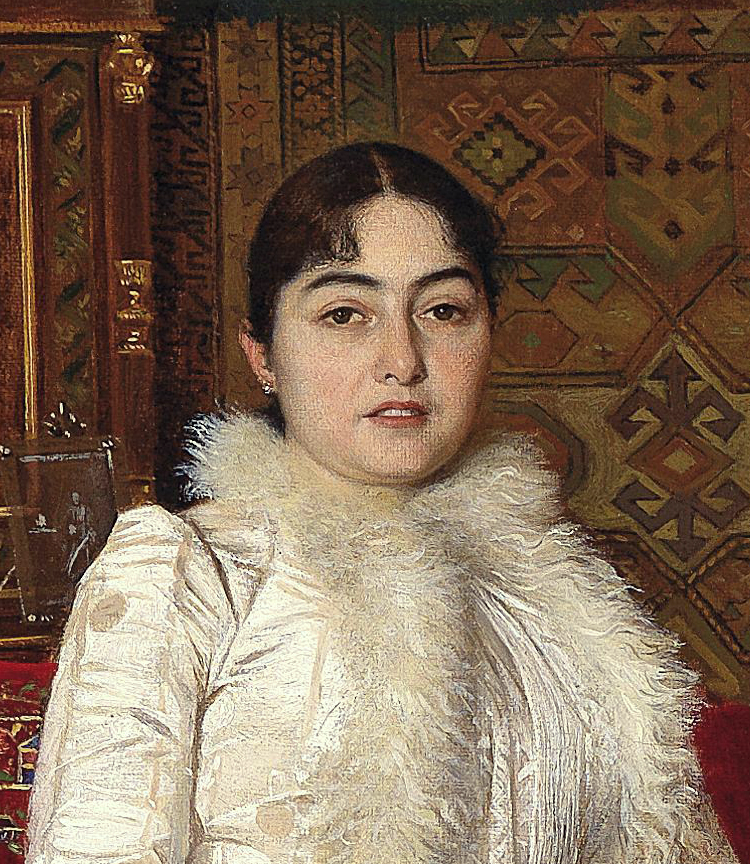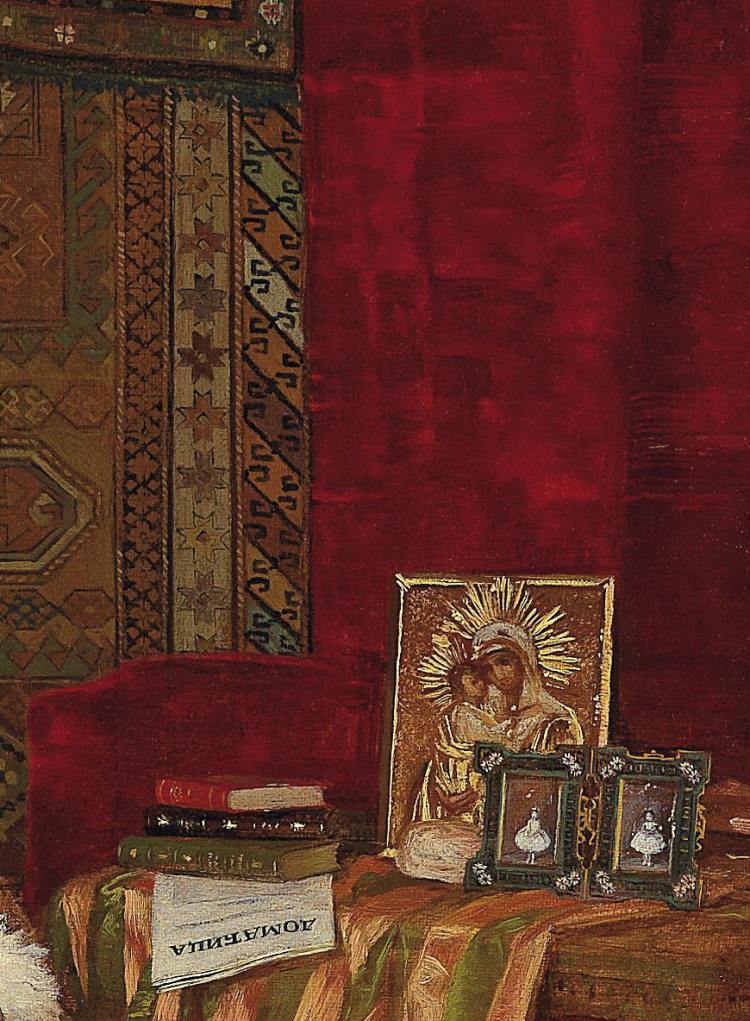Their son, the now twelve-year-old Alexander, was proclaimed king under a parliamentary regency, while both parents battled to retain influence over him. The following year the Synod of the Serbian Orthodox church officially declared that the divorce between Milan and Natalia was legal. The year after that, the government, angered by the political interference of both parents, asked them to leave the country; the Queen refused and was forced to go. And then... the next year, the couple reconciled, asking the church to revoke their divorce decree, which it did. In April of that same year, 1893, their son declarer his majority, dismissed the regency council, and soon welcomed his parents back to Belgrade.
Uroš Predić (7 December 1857, Orlovat, Austrian Empire – 12 February 1953, Belgrade), Serbian painter, best known for his early works depicting ordinary people, as well as his many portraits. He studied in Vienna and worked there for some years. Thereafter, he lived either in his home town or Belgrade. He died in the latter at the age of ninety-five.
Familial harmony only lasted about six years, though. Both parents were outraged when Alexander became engaged to and then married Draga Mašin, a former lady-in-waiting to Queen Natalia, and a widow, ten years his senior. Ex-king Milan left Serbia and died in Vienna a year later, in 1901. And, her opposition to the marriage the marriage so vocal, Alexander banished his mother from Serbia. Less than three years after their marriage, Alexander and Queen Draga were murdered in a military coup. Natalia converted to Roman Catholicism, becoming a nun, and spent the remaining years of her exile in France.
*
*
While I'm at it, here are two portraits of Queen Natalia by Vlaho Bukovac, both from 1882.
*










No comments:
Post a Comment